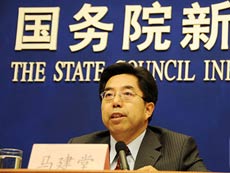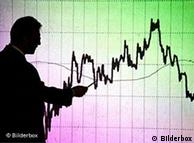Supply Chain Management Definition and Solutions
– Thomas Wailgum , CIO.com
March 19, 2007
Compiled by Thomas Wailgum and Ben Worthen
Editor's Note: This article was updated on Nov. 20, 2008, to reflect changes in supply chain management technology.
- What is supply chain management?
- What does supply chain software do?
- What is the relationship between ERP, CRM and SCM?
- What is the goal of supply chain management software?
- What is supply chain collaboration?
- What are the roadblocks to installing supply chain software?
- What is the extended supply chain?
- What is the impact of globalization on the supply chain?
- How has radio frequency identification (RFID) technology affected the supply chain?
- What is the impact of responsible sourcing, environmental sustainability and the "green" movement on the supply chain?
- What effect are on-demand software and software-as-a-service (SaaS) product offerings having on supply chain management?
What is supply chain management?
Supply chain management (SCM) is the combination of art and science that goes into improving the way your company finds the raw components it needs to make a product or service and deliver it to customers. The following are five basic components of SCM.
1. Plan—This is the strategic portion of SCM. Companies need a strategy for managing all the resources that go toward meeting customer demand for their product or service. A big piece of SCM planning is developing a set of metrics to monitor the supply chain so that it is efficient, costs less and delivers high quality and value to customers.
2. Source—Next, companies must choose suppliers to deliver the goods and services they need to create their product. Therefore, supply chain managers must develop a set of pricing, delivery and payment processes with suppliers and create metrics for monitoring and improving the relationships. And then, SCM managers can put together processes for managing their goods and services inventory, including receiving and verifying shipments, transferring them to the manufacturing facilities and authorizing supplier payments.
3. Make—This is the manufacturing step. Supply chain managers schedule the activities necessary for production, testing, packaging and preparation for delivery. This is the most metric-intensive portion of the supply chain—one where companies are able to measure quality levels, production output and worker productivity.
4. Deliver—This is the part that many SCM insiders refer to as logistics, where companies coordinate the receipt of orders from customers, develop a network of warehouses, pick carriers to get products to customers and set up an invoicing system to receive payments.
5. Return—This can be a problematic part of the supply chain for many companies. Supply chain planners have to create a responsive and flexible network for receiving defective and excess products back from their customers and supporting customers who have problems with delivered products..
For a more detailed outline of these steps, check out the nonprofit Supply-Chain Council's website.
Supply chain management software is possibly the most fractured group of software applications on the planet. Each of the five major supply chain steps previously outlined is comprised of dozens of specific tasks, many of which have their own specific software. Some vendors have assembled many of these different chunks of software together under a single roof, but no one has a complete package that is right for every company. For example, most companies need to track demand, supply, manufacturing status, logistics (i.e. where things are in the supply chain), and distribution. They also need to share data with supply chain partners at an ever increasing rate. While products from large ERP vendors like SAP's Advanced Planner and Optimizer (APO) can perform many or all of these tasks, because each industry's supply chain has a unique set of challenges, many companies decide to go with targeted best of breed products instead, even if some integration is an inevitable consequence.
It's worth mentioning that the old adage about systems only being as good as the information that they contain applies doubly to SCM. If the information entered into a demand forecasting application is not accurate, then you will get an inaccurate forecast. Similarly, if employees bypass the supply chain systems and try to manage things manually (using the fax machine or spreadsheets), then even the most expensive systems will provide an incomplete picture of what is happening in a company's supply chain.
What is the relationship between ERP, CRM and SCM?
Many SCM applications are reliant upon the kind of information that is stored inside enterprise resource planning (ERP) software and, in some cases, to some customer relationship management (CRM)packages. Theoretically a company could assemble the information it needs to feed the SCM applications from legacy systems (for most companies this means Excel spreadsheets spread out all over the place), but it can be nightmarish to try to get that information flowing on a fast, reliable basis from all the areas of the company. ERP is the battering ram that integrates all that information in a single application, and SCM applications benefit from having a single major source to go to for up-to-date information. Most CIOs who have tried to install SCM applications say they are glad they did ERP first. They call the ERP projects "putting your information house in order." Of course, ERP is expensive and difficult, so you may want to explore ways to feed your SCM applications the information they need without doing ERP first. These days, most ERP vendors have SCM modules, so doing an ERP project may be a way to kill two birds with one stone. In addition, the rise and importance of CRM systems inside companies today puts even more pressure on a company to integrate all of its enterprisewide software packages. Companies will need to decide if these products meet their needs or if they need a more specialized system.
Applications that simply automate the logistics aspects of SCM are less dependent upon gathering information from around the company, so they tend to be independent of the ERP decision. But chances are, companies will need to have these applications communicate with ERP in some fashion. It's important to pay attention to the software's ability to integrate with the Internet and with ERP applications because the Internet will drive demand for integrated information. For example, if a company wants to build a private website for communicating with their customers and suppliers, the company will want to pull information from ERP and supply chain applications together to present updated information about orders, payments, manufacturing status and delivery.
What is the goal of installing supply chain management software?
Before the Internet came along, the aspirations of supply chain software devotees were limited to improving their ability to predict demand from customers and make their own supply chains run more smoothly. But the cheap, ubiquitous nature of the Internet, along with its simple, universally accepted communication standards, have thrown things wide open. Now, companies can connect their supply chain with the supply chains of their suppliers and customers together in a single vast network that optimizes costs and opportunities for everyone involved. This was the reason for the B2B explosion; the idea that everyone a company does business with could be connected together into one big happy, cooperative family.
Of course, reality isn't quite that happy and cooperative. But today most companies share at least some data with their supply chain partners. The goal of these projects is greater supply chain visibility. The supply chain in most industries is like a big card game: the players don't want to show their cards because they don't trust anyone else with the information, but if they showed their hands they could all benefit. Suppliers wouldn't have to guess how many raw materials to order, and manufacturers wouldn't have to order more than they need from suppliers to make sure they have enough on hand if demand for their products unexpectedly increases. And retailers would have fewer empty shelves if they shared the information they had about sales of a manufacturer's product in all their stores with the manufacturer. The Internet makes showing your hand to others possible, but centuries of distrust and lack of coordination within industries make it difficult.
During the last few years most companies have gotten over the trust issue. In many cases "gotten over" is a euphemism for "have been bullied into sharing supply chain information from a dominant industry player." Want to sell your goods in Wal-Mart? Better be prepared to share data and adhere to Wal-Mart's data-exchange standards. (For more on this topic, see "How Wal-Mart Lost Its Technology Edge.")
The payoff of timely and accurate supply chain information is the ability to make or ship only as much of a product as there is a market for. This is the practice known as just-in-time manufacturing, and it allows companies to reduce the amount of inventory that they keep. This can cut costs substantially, since you no longer need to pay to produce and store excess goods. But many companies and their supply chain partners have a long way to go before that level of supply chain flexibility can be achieved.
What is supply chain collaboration?
Let's look at consumer-packaged goods for an example of collaboration. If there are two companies that have made supply chain a household word, they are Wal-Mart and Procter & Gamble. Before these two companies started collaborating back in the '80s, retailers shared very little information with manufacturers. But then the two giants built a software system that hooked P&G up to Wal-Mart's distribution centers. When P&G's products run low at the distribution centers, the system sends an automatic alert to P&G to ship more. In some cases, the system communicates down to the individual Wal-Mart store, allowing P&G monitor the shelves through real-time satellite link-ups that send messages to the factory whenever a P&G item swoops past a scanner at the register. Within the last couple of years, the relationship has expanded to include radio-frequency identification (RFID) technologies to gain even more insight into ridding inefficiencies in the supply chain.
With this kind of minute-to-minute information, P&G knows when to make, ship and display more products at the Wal-Mart stores. There's no need to keep products piled up in warehouses awaiting Wal-Mart's call. Invoicing and payments happen automatically too. The system saves P&G so much in time, reduced inventory and lower order-processing costs that it can afford to give Wal-Mart "low, everyday prices" without putting itself out of business. (For more on Wal-Mart's supply chain, see "How Wal-Mart Lost Its Technology Edge.")
What are the roadblocks to installing supply chain software?
Gaining trust from your suppliers and partners.
Supply chain automation is uniquely difficult because its complexity extends beyond a company's walls. Employees will need to change the way they work and so will the people from each supplier that a company adds to its network. Only the largest and most powerful manufacturers or retailers (i.e. Wal-Mart) can force such radical changes down suppliers' and partners' throats. Most companies have to sell outsiders on the system. Moreover, one company's goals in installing the system may be threatening to their suppliers, to say the least. For example, Wal-Mart's collaboration with P&G meant that P&G would assume more responsibility for inventory management, something retailers have traditionally done on their own. Wal-Mart had the clout to demand this from P&G, but it also gave P&G something in return—better information about Wal-Mart's product demand, which helped P&G manufacture its products more efficiently. In order for a company to get its supply chain partners to agree to collaborate, business leaders and supplier relations managers have to be willing to compromise and help partners achieve their own goals.
Internal resistance to change.
If selling supply chain systems is difficult on the outside, it isn't much easier inside. Operations people are accustomed to dealing with phone calls, faxes, spreadsheets or hunches scrawled on paper, and will most likely want to keep it that way. If management can't convince front-line operations people that using the software will be worth their time, they will easily find ways to work around it. Senior executives cannot disconnect the telephones and fax machines just because they have supply chain software in place.
Many mistakes at first.
There is a diabolical twist to the quest for supply chain software acceptance among employees. New supply chain systems process data as they are programmed to do, but the technology cannot absorb a company's history and processes in the first few months after an implementation. Forecasters and planners need to understand that the first bits of information they get from a system might need some tweaking. If they are not warned about the system's initial naiveté, they will think it is useless. In one case, just before a large automotive industry supplier installed a new supply chain forecasting application to predict demand for a product, an automaker put in an order for an unusually large number of units. The system responded by predicting huge demand for the product based largely on one unusual order. Blindly following the system's numbers could have led to inaccurate orders for materials being sent to suppliers within the chain. The company caught the problem but only after a demand forecaster threw out the system's numbers and used his own. That created another problem: Forecasters stopped trusting the system and worked strictly with their own data. The supplier had to fine-tune the system itself then work on reestablishing employees' confidence. Once employees understood that they would be merging their expertise with the system's increasing accuracy, they began to accept and use the new technology.
What is the extended supply chain?
The extended supply chain is a clever way of describing everyone who contributes to a product. So if a company makes text books, then its extended supply chain would include the factories where the books are printed and bound, the company that sells the paper, the mill where that supplier buys their stock, and so on. It is important for a company to keep track of what is happening in its extended supply chain because a supplier or a supplier's supplier could end up having an impact on you (as the old saying goes, a chain is only a strong as its weakest link). For example, a fire in a paper mill might cause the text book manufacturer's paper supplier to run out of inventory. If the text book company knows what is happening in its extended supply chain it can find another paper vendor.
What is the impact of globalization on the supply chain?
Just in time manufacturing isn't the only way companies have used their supply chains to reduce cost. Manufacturing in developing countries is substantially cheaper than in the United States because of the low cost of labor. For example, the hourly wage for China's manufacturing and production workers isless than one dollar per hour. But foreign manufacturing brings with it another set of challenges. It isn't as easy to set up real-time data sharing with a factory in, say, China as it is with a factory you own in the United States. And the sheer distance that overseas goods need to travel—not to mention the number of vessels they need to travel on— to reach the U.S. increases the chance that they will get delayed. The bottom line is that foreign manufacturing brings back a lot of the uncertainty that supply chain systems were designed to eliminate. The good news is that technology capable of tracking shipments throughout the world is getting better. The bad news is that a lot of this technology is still pretty expensive, that some of the places a company would want to deploy it don't have the necessary infrastructure in place, and, well, there isn't a piece of technology out there that can make up for the whim of a Chinese customs official. Furthermore, labor costs in some places are so low that IT automation and monitoring projects may add more to costs—in terms of software, hardware and still-precious (and unreliable) bandwidth—than they save in productivity. Hence, some low-tech or commodity products may not be worth monitoring at all until they hit a ship in a foreign port.
In the meantime, the best bet for companies is to use whatever systems they can to gain as much visibility into the global supply chain as possible. It may be impossible to replicate the just in time model on a global scale, but by applying technology , and by choosing the supply chain partners who have the capability to share data with operations, a company can get many of the benefits of just in time while paying low foreign prices.
How has radio frequency identification (RFID) technology affected the supply chain?
RFID (radio frequency identification) tags are essentially barcodes on steroids. Whereas barcodes only identify the product, RFID tags can tell what the product is, where it has been, when it expires—essentially whatever information a company wishes to program. RFID technology generates mountains of new data about the location of pallets, cases, cartons, totes and individual products in the supply chain. It produces oceans of information about when and where merchandise is manufactured, picked, packed and shipped. It creates rivers of numbers telling retailers about the expiration dates of their perishable items—numbers that will have to be stored, transmitted in real-time and shared with warehouse management, inventory management, financial and other enterprise systems. In other words, as RFID technologies in the supply chain spread into the operations of more manufacturers, parts suppliers and retailers, they will transform the supply chain as we know it today.
Another benefit of RFIDs is that, unlike barcodes, RFID tags can be read automatically by electronic readers. Imagine a truck carrying a container full of widgets entering a shipping terminal in China. If the container is equipped with an RFID tag, and the terminal has an RFID sensor network, that container's whereabouts can be automatically sent to Widget Co. without the truck ever slowing down. It has the potential to add a substantial amount of visibility into the extended supply chain.
Right now, the two biggest hurdles to widespread RFID adoption are the high cost of building the infrastructure to manage RFID data and a lack of return on investment (ROI) for many midsize and small manufacturers working in today's supply chains.
What is the impact of responsible sourcing, environmental sustainability and the "green" movement on the supply chain?
If the technological side of supply chain management wasn't hard enough, the new "corporate social responsibility" (CSR) movement inside 21st century organizations and IT departments adds another layer of complexity. Broadly defined, CSR initiatives for companies include such strategies as being able to show environmental sustainability (i.e. reducing the carbon footprint), responsible sourcing from a wide range of global suppliers, and how "green" an organization is.
So how does that affect supply chain management? Visibility. In order to prove that a company has lowed its carbon emissions, isn't dumping hazardous materials into rivers and doesn't buy its materials from suppliers that employ underage workers, company leaders need to be able to gain insight into and track the actions of their suppliers, and their suppliers and their suppliers—all the way down the chain into some good and not-so-good parts of the global economy. This ability also becomes critical when tainted goods need to be identified and found quickly in a supply chain, before the goods spread throughout a country's population.
Wal-Mart announced in fall 2008 that all of its suppliers—including the thousand located in China—would have to be in compliance with laws and regulations relating to rigorous social, environmental and energy efficiency mandates. Wal-Mart's suppliers would even have to attest that their suppliers received high ratings on environmental and social practices.
What effect are on-demand software and software-as-a-service (SaaS) product offerings having on supply chain management?
On-demand and SaaS software offerings have gained marketshare in the customer relationship management (CRM) product space and are making in-roads in the enterprise resource management (ERP) arena. The reasons why companies are now purchasing those SaaS solutions rather than traditional on-premise software solutions (such as faster implementations) will be the same rationale as to why companies will purchase on-demand/SaaS SCM services in the future. In fact, many vendors now offer mature SaaS SCM offerings because of their efforts with Web-based electronic trading exchanges of the past; it's just a matter of time before companies, their supply chain managers and IT staffers feel comfortable with a SaaS package. Just as with SaaS CRM and ERP, there are important security, ROI, integration, and pricing questions that the SaaS SCM vendors need to iron out before the software delivery mechanism takes off.
















